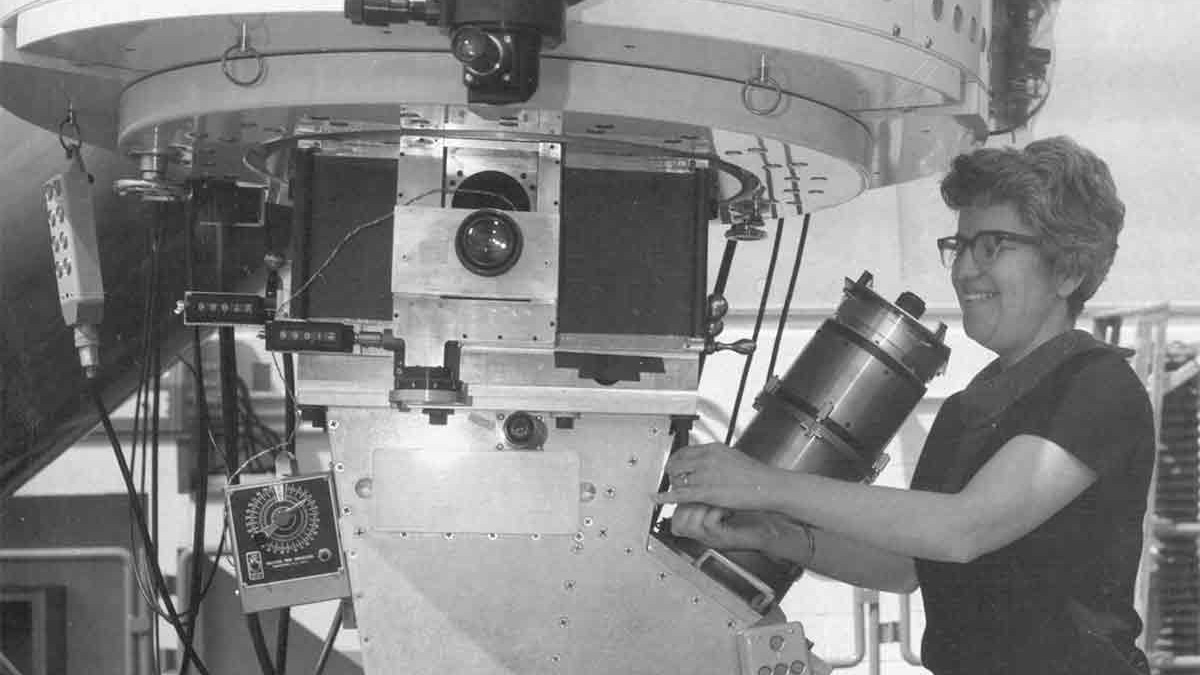It's Official: Vera Rubin Observatory Named to Honor Dark Matter Scientist
HONOLULU — A U.S. facility designed in part to solve the mysteries of dark matter now officially carries the name of Vera Rubin, the scientist who concluded that the elusive substance must exist.
That announcement came Monday (Jan. 6) here, at the 235th meeting of the American Astronomical Society, during an open house devoted to what to date has been called the Large Synoptic Survey Telescope (LSST). However, the name change had been in the works since the summer, when Congress began discussing a bill that would create the new moniker. That bill became a law on Dec. 20.
"We're here today to focus on the major renaming of the facility after a pioneering astronomer, that is intimately tied to one of the key focus science areas for this project," Ralph Gaume, Director of the National Science Foundation's Division of Astronomical Sciences, said during the event. "I'm pleased, very pleased, beyond how much you all know and may recognize, to today officially rename the LSST observatory as the Vera C. Rubin Observatory."
Video: NSF Vera C. Rubin Observatory Will Be Revolutionary
Related: Vera Rubin: The Astronomer Who Brought Dark Matter to Light

Gaume's comments were met by applause from the gathered astronomers. Observatory director Steve Kahn and other team members soon donned T-shirts sporting the new name.
The Vera C. Rubin Observatory is a federal project run by the National Science Foundation and the U.S. Department of Energy. Its first 10 years of work will be dedicated entirely to a project now known as the Legacy Survey of Space and Time. "Because we know you're all in love with the four letters LSST, we figured out a way to preserve that," Gaume said.
Until her death in 2016, Rubin was frequently listed as a candidate for the Nobel Prize in physics. Her most consequential realization was that galaxies rotate so quickly that they ought to fly apart. The fact that they don't, she reasoned, is proof that there is a massive amount of, well, something in the universe that humans cannot yet study directly — what we now call dark matter.
Sign up for the Live Science daily newsletter now
Get the world’s most fascinating discoveries delivered straight to your inbox.
But Rubin, who was born in 1928, struggled throughout her career to convince others to treat her based on the merits of her work, rather than on her sex. When she did make traction in the community, she worked to share that acceptance with others.
"She has multiple legacies of, of course, the major science work, the major discoveries and the major legacy of paving way for young people and especially women," Kathy Turner, program manager of the Department of Energy's Office of High Energy Physics, said during the presentation. "Speaking especially as a woman and as a physicist, I feel honored to be part of this project."
Another new name is also in the works, that one for a specific instrument in order to honor the private donation that kickstarted the LSST project before it was adopted by the federal government. The presentation included a thorough primer on how to use each of the names in scientific writing. "We'll all get used to this as we go along," Kahn said.
The panel also included an update on the facility's construction, given by project manager Victor Krabbendam. "The summit facility is looking really good," he said, sharing images of optical equipment at the Vera C. Rubin Observatory site, which is located on a mountain ridge called Cerro Pachón, in Chile. However, he did add that some aspects of the project have been progressing more slowly and at a higher cost than previously expected, and that the team is pushing the schedule to meet its goal of taking "first light" data with its full-observing capacity in November 2021.
That first data could be a vital step toward solving the dark-matter puzzle that Rubin discovered on her way to becoming a major figure in astronomy. Turner recounted that her initial encounter with Rubin's research, as a college student, was a crucial moment on her own path to becoming a physicist, and the way her respect for Rubin has deepened over time.
"[I remember] thinking, yes, science is a field that women have a right to be in and a right to pursue, and we don't have to take no for an answer," Turner said. "Her dogged determination to be recognized for her work was really something that stood out to me when I read more detail about her."
- This Year's Nobel Prize in Physics Mixes 2 Research Fields — And Politics
- 'We Don't Planet' Episode 4: What's the Evidence for Dark Matter?
- What's 96 Percent of the Universe Made Of? Astronomers Don't Know
Email Meghan Bartels at mbartels@space.com or follow her @meghanbartels. Follow us on Twitter @Spacedotcom and on Facebook.

Meghan is a senior writer at Space.com and has more than five years' experience as a science journalist based in New York City. She joined Space.com in July 2018, with previous writing published in outlets including Newsweek and Audubon. Meghan earned an MA in science journalism from New York University and a BA in classics from Georgetown University, and in her free time she enjoys reading and visiting museums. Follow her on Twitter at @meghanbartels.










